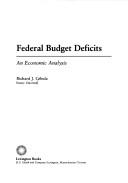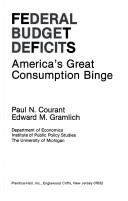| Listing 1 - 10 of 408 | << page >> |
Sort by
|
Book
ISBN: 041507262X Year: 1992 Publisher: London Routledge
Abstract | Keywords | Export | Availability | Bookmark
 Loading...
Loading...Choose an application
- Reference Manager
- EndNote
- RefWorks (Direct export to RefWorks)
Book
Year: 1982 Publisher: Santo Domingo, República Dominicana : FORUM,
Abstract | Keywords | Export | Availability | Bookmark
 Loading...
Loading...Choose an application
- Reference Manager
- EndNote
- RefWorks (Direct export to RefWorks)

ISBN: 0669110957 9780669110951 Year: 1987 Publisher: Lexington (Mass.): Lexington books,
Abstract | Keywords | Export | Availability | Bookmark
 Loading...
Loading...Choose an application
- Reference Manager
- EndNote
- RefWorks (Direct export to RefWorks)
Book
Year: 2010 Publisher: København : Nordisk ministerråd,
Abstract | Keywords | Export | Availability | Bookmark
 Loading...
Loading...Choose an application
- Reference Manager
- EndNote
- RefWorks (Direct export to RefWorks)
SisällysluetteloToimintasuunnitelma ja budjetti 2010Pohjoismaiden ministerineuvoston budjetti sektoreittainPoliittiset painopisteet ja budjetin päälinjat vuonna 2010Pohjoismaiden ministerineuvoston globalisaatioaloitteetPohjoismaiden ministerineuvoston Islanti-aloitteetBudjettivarojen uudelleenkohdennukset Pohjoismaiden ministerineuvoston budjetissaKeskustelut Pohjoismaiden neuvoston kanssa vuoden 2010 budjetistaPohjoismaiden ministerineuvoston toiminnan rahoitusMaiden ennustetut maksuosuudet kansallisina valuuttoinaPohjoismaiden ministerineuvoston projektinhallinnan tilaPohjoismaiden ministerineuvoston budjetin ja likviditeetin kehitysKäyttämättömien varojen kehitysBudjetin kehitys vuosina 2000-2010Likviditeetin kehitys.
Book
Year: 2015 Publisher: Washington, D.C. : International Monetary Fund,
Abstract | Keywords | Export | Availability | Bookmark
 Loading...
Loading...Choose an application
- Reference Manager
- EndNote
- RefWorks (Direct export to RefWorks)
The administrative expenditure outturn for FY2015 reflects continued budget discipline, as new demands and initiatives were accommodated through reprioritization and better use of existing resources within an unchanged envelope. The overall budget utilization rate of 98 percent was achieved through more efficient personnel management practices and effective reallocation of resources from underutilized areas to areas of emerging pressure. In terms of outputs, the Fund continued its focus on addressing global policy challenges and reducing vulnerabilities. Resources allocated to multilateral surveillance, oversight of the global systems and capacity development increased while bilateral surveillance and lending declined moderately, in line with easing of crisis-related work. Spending by country reflects a continued shift towards a more risk-based approach, consistent with the established priorities. Capital expenditures mainly reflected the major renovation of the HQ1 building and improvements in information technology infrastructure and security to better support the staff's work and protect information assets.
Book
Year: 2006 Publisher: København : Nordisk ministerråd,
Abstract | Keywords | Export | Availability | Bookmark
 Loading...
Loading...Choose an application
- Reference Manager
- EndNote
- RefWorks (Direct export to RefWorks)
Spillet om den nordiske velferden er en debattrapport om den nordiske velferdsmodellens fremtid i den globale konkurranseøkonomien. Velferds-forskningsprogrammet (2000-2005) til Nordisk Ministerråd konkluderte med at vi har en nordisk velferdsmodell. Debattrapporten oppsummerer viktige resultater, analyser og budskap fra forskningsprosjektene. Ledende politikere, ledere for arbeidsmarkeds-organisasjonene og velferdsforskere i Norden har gitt sine bud på hva som er den nordiske velferdssamfunnenes styrker, svakheter og viktigste utfordringer i årene fremover. Rapporten peker på at de nordiske velferdsstatene står overfor store utfordringer i årene fremover for å balansere videreutviklingen av velferdsstatene med posisjonering i den globale konkurranseøkonomien.
Book
Year: 2003 Publisher: Washington, D.C. : World Bank,
Abstract | Keywords | Export | Availability | Bookmark
 Loading...
Loading...Choose an application
- Reference Manager
- EndNote
- RefWorks (Direct export to RefWorks)
Book
Year: 1996 Publisher: Cambridge, Mass. National Bureau of Economic Research
Abstract | Keywords | Export | Availability | Bookmark
 Loading...
Loading...Choose an application
- Reference Manager
- EndNote
- RefWorks (Direct export to RefWorks)
This paper analyzes Latin America's experience with fiscal adjustment during the last decade. The paper discusses in detail how some countries -- most notably Argentina, Chile and Mexico -- were successfully able to eliminate their fiscal deficits in a relatively short period of time. Their experiences with tax reform and expenditure reduction are analyzed, and some political economy angles of the fiscal adjustment process are emphasized. The paper also discusses the interaction between privatization and fiscal adjustment. An analysis of the relationship between social security systems and fiscal imbalances is provided. In particular, the Chilean pension system reform -- which replaced an insolvent and inefficient pay-as- you-go system with a fully funded one administered by private companies -- is analyzed in some detail. The paper concludes with a discussion of the main lessons from the Latin American reforms for the transitional economies and other reforming countries.

ISBN: 0133084388 Year: 1986 Publisher: Englewood Cliffs Prentice-Hall
Abstract | Keywords | Export | Availability | Bookmark
 Loading...
Loading...Choose an application
- Reference Manager
- EndNote
- RefWorks (Direct export to RefWorks)
Book
Year: 1996 Publisher: Cambridge, Mass. National Bureau of Economic Research
Abstract | Keywords | Export | Availability | Bookmark
 Loading...
Loading...Choose an application
- Reference Manager
- EndNote
- RefWorks (Direct export to RefWorks)
Since a typical regulatory mandate can be equated in its economic effect to a combination of an expenditure program and a tax program, observers have often suggested that it would serve consistent public policy to bring regulatory decisions into the same budgetary framework. This paper concerns an important example of a regulatory program that would mimic deficit financing in effecting a transfer of fiscal burdens toward younger and future generations, the mandated purchase of (or provision by employers of) health care insurance under a system of community rating, under which the same price is charged for health insurance for all comers, regardless of age, sex, or health condition. Such a shift would result in redistributions of burdens across birth cohorts, in this case from existing, especially middle-aged birth cohorts toward future generations. Using data from a variety of sources we conclude the effect would be substantial. For our central-case assumptions about discount, health care cost, and productivity growth rates, and about the locus of responsibility for paying health care bills, a shift to community rating is estimated to generate gains for people over age 30 in 1994, $16,700 per person aged 50 for example, at the cost to younger cohorts. Those born in 1994 would acquire an extra payment obligation with a discounted value of $7,100 each. The burden passed along to future generations can be described by a $9,300 per capita tax at birth (growing with productivity). The analysis makes clear that the regula- tory policy shift, with no direct budgetary implications, would have an intergenerational transfer effect comparable to what would be considered a major change in on-budget tax or transfer programs.
| Listing 1 - 10 of 408 | << page >> |
Sort by
|

 Search
Search Feedback
Feedback About UniCat
About UniCat  Help
Help News
News